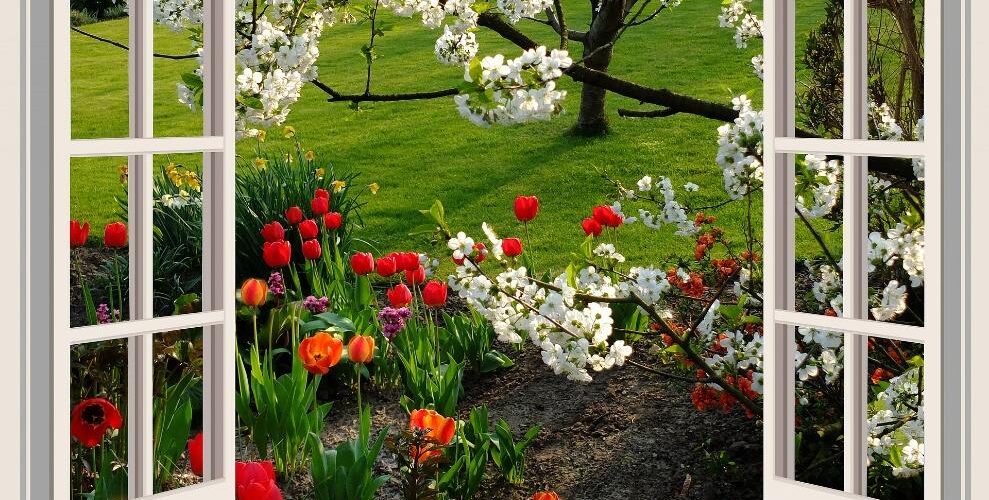The Garden in April
“Oh, to be in England
Now that April’s there”
These are the first lines of a poem by Robert Browning called “Home Thoughts from Abroad” – written while he was in Italy. There is certainly something special about April in England (or any other part of the UK!). It’s a time when everything seems to be bursting into bud or flower, and the days are gradually getting warmer and lighter.
However, April can still be changeable. It’s not unknown to have snow in April, and, as the poem below by Robert Frost suggests, we can feel as if we’re going through several seasons at once:
“The sun was warm but the wind was chill.
You know how it is with an April day.
When the sun is out and the wind is still,
You’re one month on in the middle of May.
But if you so much as dare to speak,
a cloud come over the sunlit arch,
And wind comes off a frozen peak,
And you’re two months back in the middle of March.”
- Robert Frost, Two Tramps in Mud Time, 1926
Jobs for April
But April is a busy month, whatever the weather is like. Bulbs that have finished flowering need to be deadheaded – quite a nice job to do while walking round the garden to see what’s coming up and what (sadly) might not have made it through the winter. This is the time to repair damaged retaining walls, level out your stepping stones, clean out your gutters, and fix fences, benches, decks, sheds, trellises, window boxes and raised beds. These tasks are easier to accomplish while your plants are still dormant.
Slugs and Snails!
Herbaceous perennials are starting to emerge – but so are the slugs and snails! These have been named as the garden pests that gardeners most loathe. They will decimate your plants if they’re not controlled. Of course, you can buy slug pellets, some of which are labelled as organic, such as those based on aluminium sulphate. This is probably the easiest method. However, there are some non-chemical ways to treat them. One suggestion is to lay laying boards or pieces of cardboard on the bare soil around your plantings. Each morning, turn the boards over and scrape the hiding pests into large plastic containers. Cover and place in the freezer for three hours. When frozen stiff, dump them on your compost pile.
I’m just not sure I fancy the idea of slugs in my freezer!

Another suggestion is to place shallow dishes of beer around the garden to lure the slugs or snails to a drunken death.
Some gardeners claim that circling plants with powdered materials such as wood ash (which is also a good source of potassium for your plants), coffee grounds, pine needles, coarse sand, or crushed eggshells can prevent slugs and snails. Or, as suggested in the 1963 edition of Old Farmer’s Almanac, people used to:
“Strew leaves of lettuce, spinach, cabbage, or slices of raw potato in the garden. The night feeders collected beneath these materials, and the next morning they were gathered and eliminated. Frogs and toads are good consumers of slugs. Old timers, living by their wits, learned to make use of simple materials for insect control. They found that slugs do not like alkaline ground. Slaked lime, wood ashes, slag, sand, and cinders were useful against slugs.”
Some plants, like astilbe, phlox and mint, are less susceptible to slug damage, so, if you really hate slugs, you could limit what you plant in the garden. And raking your garden in Spring will clean up some of the moist debris that slugs and snails love, as well as to rake away any soil-borne eggs. Large wood chips also provide hiding areas for slugs, so try not to use them.
And the weeds…..!
Not only are trees, shrubs and flowers starting to grow, but the weeds are growing, too. If you can dig them up at this time of year, before they get too big, you will make life easier for yourself later in the year. Weeds have evolved and adapted to be amongst the most efficient, successful and tenacious species in the plant kingdom, and so they are notoriously difficult to get rid of.
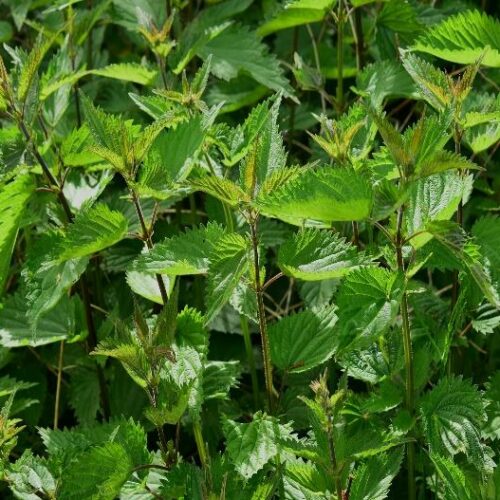
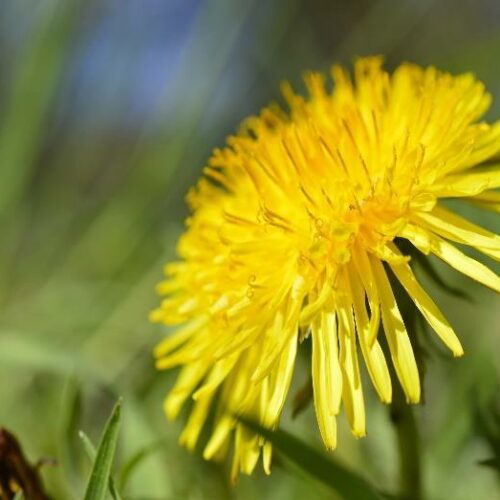
Annual weeds
Some annual weeds like chickweed and groundsel can usually be controlled by hoeing. However, annual weeds produce huge amounts of seed which can lie dormant in the ground for years, so it’s important to keep hoeing and raking, otherwise it’s not long before they take over again.
Perennial weeds
Perennial weeds like the two above (nettles and dandelions) need a bit more work. Dandelions and docks have long tap roots that grow deep into the ground and are almost impossible to eradicate. Others, like creeping buttercup, spread by stolons and runners that grow along the soil and root at the point of contact. Bindweed is very difficult to control. A tiny piece left in the soil will regenerate and grow a new plant. It’s the same problem with marestail (equisetum)
If you are not keen on chemical weedkillers, the best way to control weeds is to dig, and keep digging, and don’t let them flower or set seed. Covering them up with cardboard or weed suppressant sheeting can help, but you will still need to weed around individual plants – probably by hand.
Are weeds good?
But don’t forget that weeds have their uses, too. Many have been used in medicine or in cooking and many are useful in attracting insects. Dandelions, for instance, are rich in pollen and nectar, providing a good source of food for honeybees. Nettles attract wildlife such as butterflies and ladybirds will eat the aphids that shelter on them. Many wildlife websites recommend keeping a patch of nettles or dandelions in the garden – not only to attract insects, but because their leaves can be used to make teas or wines, or, in the case of nettles, soup, if they are picked early in the season. Another use for nettles is to make a fertiliser which is rich in minerals (though rather smelly!) by steeping the leaves in water for 3-4 weeks and then straining. Nettles are actually quite fussy about the soil they in which they grow.in They require a soil rich in phosphates and nitrogen to thrive. If you see a patch, grow plants alongside that thrive in similar conditions.
So, if you can, keep a patch for some of the weeds that might be useful to you – just don’t let them get out of control!
Everything else…
Of course, it’s not all slugs and snails and weeds in the garden in April. More and more flowers are starting to appear. Flowers in bloom in my garden in April include bulbs such as tulips, chionodoxas, muscari, bluebells, scillas and ipheions and perennials such as primroses, cowslips, euphorbias and epimediums. Flowering shrubs include forsythia, ribes (American currant) and amelanchier, as well as fruit trees, like the pear and the plum.
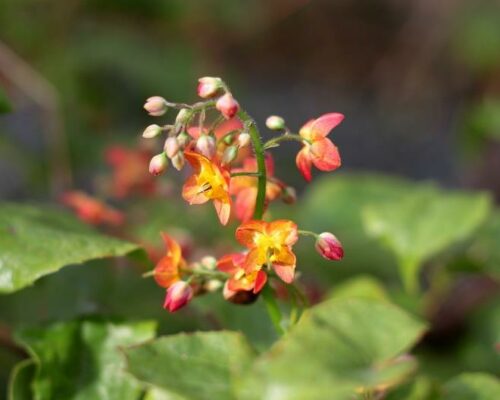
Epimedium warleyense
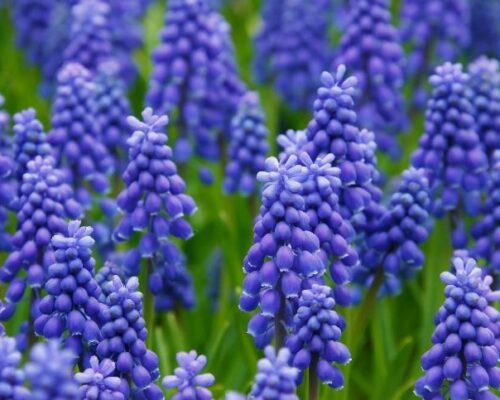
Grape hyacinth (Muscari neglectum)
What to do in April
There’s plenty of work to be done in April. Some of this has to do with preparing soil for the growing season by digging in compost and fertiliser, and a layer of mulch can also be applied around perennials and biennial plants, trees and shrubs before the hot weather arrives, using organic material such as well-rotted manure. Trees and shrubs (in particular roses) benefit from a slow-release fertiliser at this time of year. Border perennials, like hostas and primroses, can be lifted and divided to make them more vigorous and to create new plants for the garden.
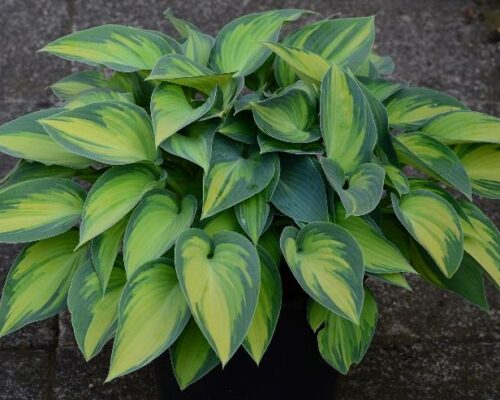
Hosta
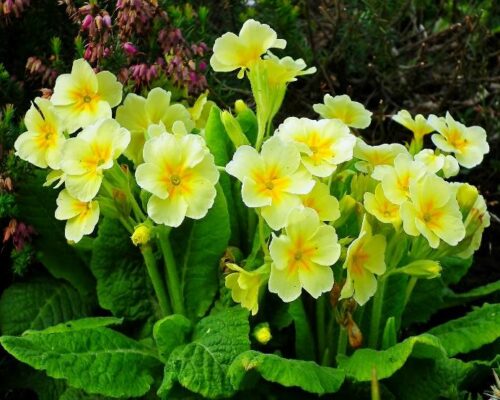
Primrose ( primula vulgaris)
Pruning and trimming
As more flowers come into bloom, the more dead-heading and trimming needs to be done when they finish flowering, particularly on daffodils and tulips and winter-flowering pansies. Forsythia can be pruned as soon as it’s finished flowering, cutting back to strong, young shoots. But leave pruning penstemons and salvias until the harsh winter weather is over (usually late April or early May), as the old stems provide frost protection for the new shoots. Any suitable trimmings can be used as cuttings.
Climbers
Honeysuckle and clematis are growing vigorously now, and should be tied into their supports to train them. The clematis that flower early in the year need little or no pruning, but can be tidied up after flowering to keep them in shape.
The tips of sweet pea plants can be pinched out when they reach about 10cm tall to encourage bushy growth. Once the risk of frost has passed they can be moved outside to acclimatise them to outdoor conditions before they’re planted in their final positions.
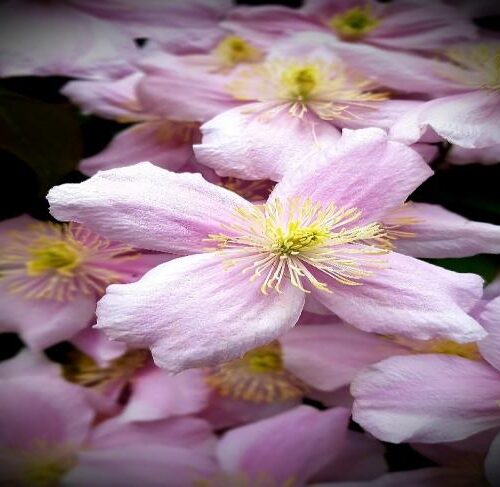
Clematis montana
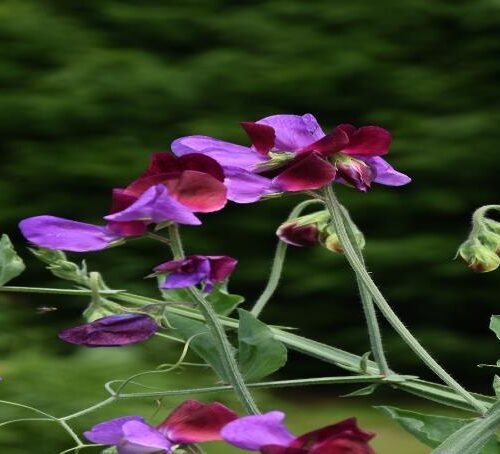
Sweet pea (lathyrus odoratus)
Seed sowing
And, as if all that wasn’t enough, there are plenty of seeds that can be sown now, either in the ground or on a windowsill or in a cool greenhouse or propagator.. Tender plants like aubergines and courgettes need to be sown inside, and it’s the last chance to sow tomatoes. Outside, if the weather is warm enough, many vegetable seeds can be sown, such as beetroot, radishes, spinach and chard.
In the flower garden hardy annuals such as calendula, eschscholzia, nigella and cornflowers, can be sown directly into the ground. Perennial seeds are usually sown under cover about 10 weeks before the last frost date – which does vary a lot in the UK. In many cases at least a month should be allowed for germination.
For more detailed information about what seeds to sow each month, Sarah Raven’s website is very helpful. And the Gardeners’ World website provides advice on eight of the best perennials to grow from seed.
Potatoes
Finally, there is a tradition (or is it an old wives’ tale?) that potatoes should be planted on Good Friday. It’s difficult to know how this can be applied scientifically, as Good Friday is a moveable feast. Last year Good Friday was on 10th April, but we’d already planted some potatoes by 23rd March, as we had a very mild Spring. This year Good Friday is on 2nd April, and, if the current cold weather continues, we’ll be lucky to get them in then. Some people claim that this tradition arose because. In the old days, Good Friday was the only free day people had between New Year and Easter to get out into their gardens to start planting, so they had no choice. Another tradition says that, after the potato’s introduction to Europe in the 16th Century Protestants in the UK and Ireland would not plant potatoes because they were not mentioned in the Bible. Catholics in Ireland, though, were OK about it, as long as the seed potatoes were sprinkled with Holy Water and planted on Good Friday, so that they were “baptised”!
Whatever you feel about planting potatoes, with a bit of luck and the increase in the length of the days and the better weather, we can keep our fingers crossed that we have put the worst of Winter behind us –most of the time, anyway!

About the Author
Caroline Bowman has been hooked on gardening ever since she grew some thyme from seed and planted it in a window box when she lived in a flat in London. Fifty years later she is still hooked on gardening, but now she lives in Lincolnshire in England where they have quite a big suburban garden as well as an allotment, where they grow fruit and vegetables. Caroline loves flowering plants, in particular herbaceous perennials and she likes finding out about the more unusual varieties that will do well in the English climate and soil.
GARDENIZE GARDEN APP
Your garden friend with green fingers and photographic memory.
Gardenize is an app for gardening and cultivation that helps you to overview, understand and develop your garden and your crops. Organizing your garden makes it easier to succeed and your Gardenize app structures all information and make it searchable. You’ll get tips and inspiration from other Gardenizers around the world. All Gardenize basic features are free to use. You can download the app from the App Store or Google Play, or create an account directly in the web app in your browser. Get to know Gardenize better here.
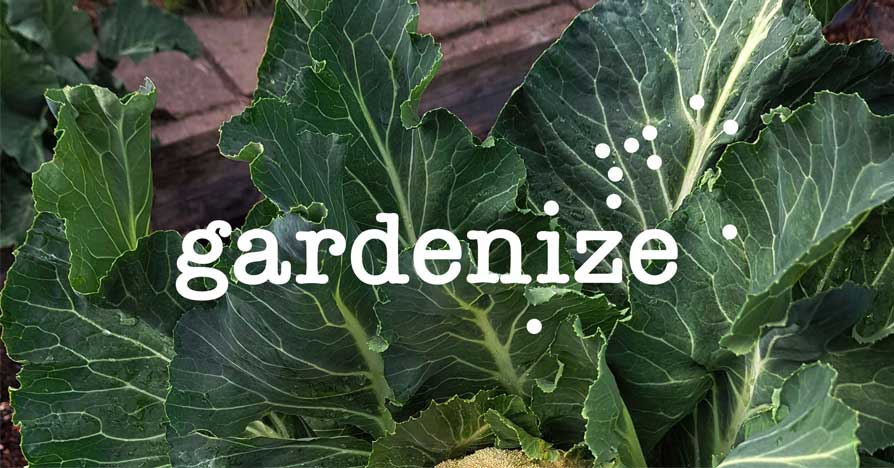
More from Gardenize
Images published on the Gardenize website belong to Gardenize AB and may not be used without permission.

